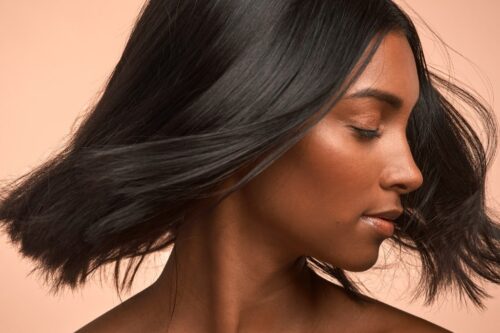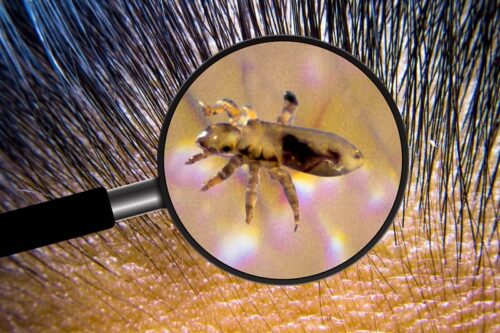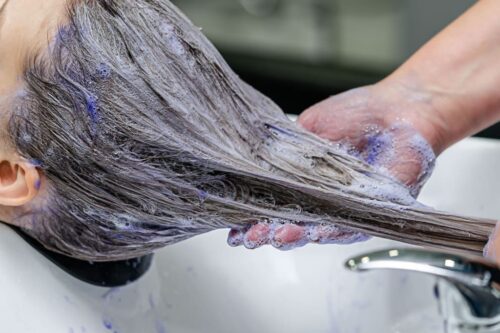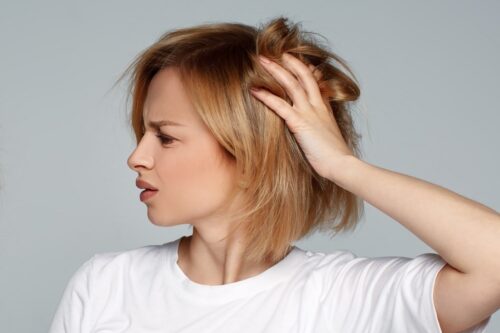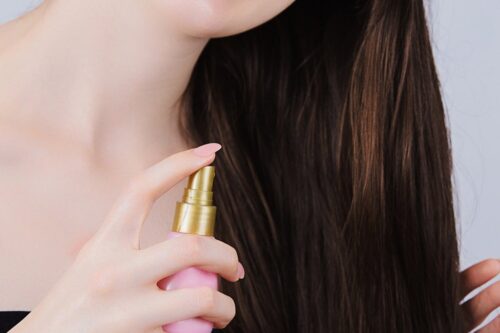Are you considering coloring your hair with a fresh new tone for summer? Or, have you been coloring your hair for years? Either way, you know that maintaining your color-treated hair is essential if you want to have healthy, vibrant hair.
Because color-treated hair has been chemically processed, it needs a bit of extra care. But, don’t worry, maintaining your colored hair is not difficult.
If you put the effort into starting a good hair care routine, it will soon become second-nature and, if you have been coloring your hair for years, you will wonder why you haven’t been doing these things all along!
If you are coloring your hair for the first time, this article will put you ahead of the game and prepare you to maintain your color-treated hair in the best way possible.
If you are a long-timer when it comes to hair color treatments, this article will remind and educate you, so that you can acquire and keep good habits and ditch the bad ones.
There are four main ways to maintain color-treated hair:
- Wash it properly.
- Apply regular hair treatments.
- Protect it from damage.
- Refresh your color.
Keep reading to find out exactly how you can apply these four suggestions, and ultimately achieve your dream of having healthy, vibrant, color-treated hair.
How To Maintain Colored Hair?
Maintaining colored hair requires a combination of the right products, techniques, and habits to ensure that the color lasts as long as possible while keeping your hair healthy. Here are some tips to help you maintain your colored hair:
1. Washing Habit
Washing your color-treated hair properly is more important than you may think. Both the way in which you wash your hair and the products you use affect the health and appearance of your color-treated hair.
Below are three suggestions for properly washing your hair.
Use a Color-Safe Shampoo
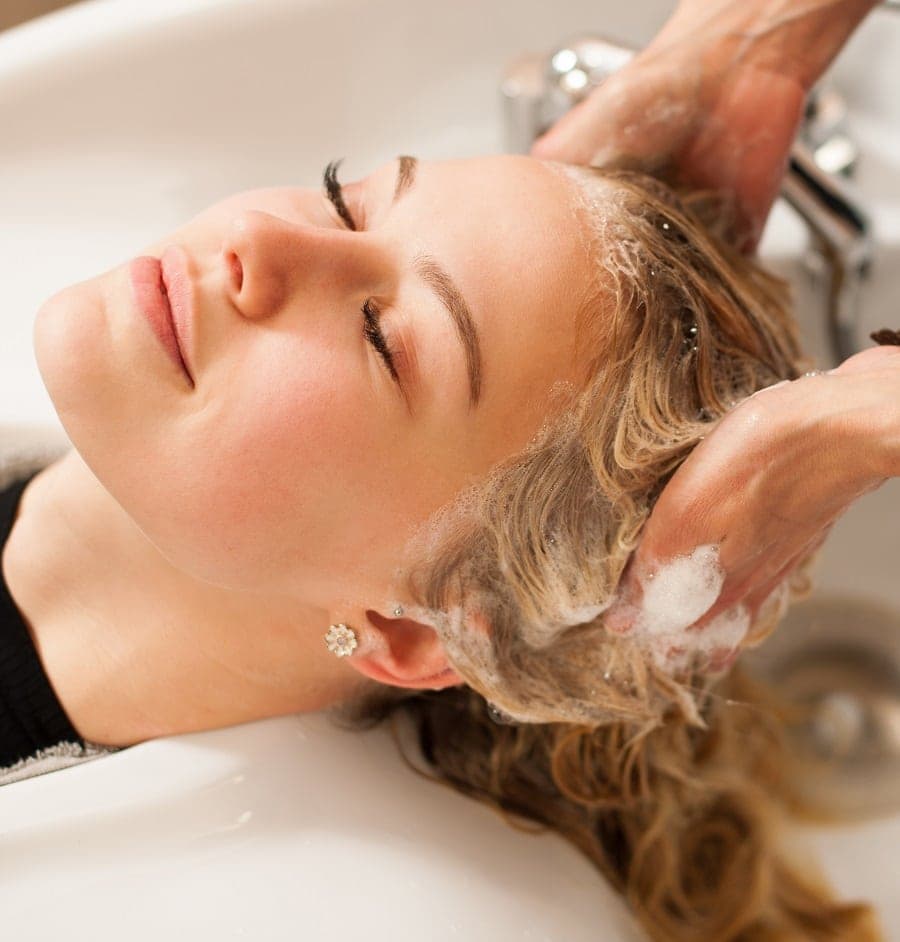
If your hair is color-treated, using a color-safe shampoo is a must. Shampoos that contain sulfates and harsh alcohols strip the hair of all of its natural oils and also cause hair color to fade quicker.
Cetyl and cetearyl alcohols are fatty alcohols that are contained in many skincare and haircare products and are not harmful to your hair, but you need to avoid shampoos that contain isopropyl alcohol.
If you occasionally clarify your hair with a sulfate-containing clarifying shampoo, try replacing it with a clarifying shampoo that contains charcoal or apple cider vinegar instead. Those natural ingredients provide a deep cleanse without the harmful effects of sulfates.
Also, before you instantly buy a shampoo that says “color safe” on the bottle, check the ingredients. Some shampoos that profess to be color-safe contain ingredients like sulfates and alcohol that are not safe for color-treated hair.
Do Not Wash Your Hair With Hot Water
If you enjoy hot, steamy showers like me, the idea of turning down the heat does not seem appealing. But, washing your hair with very hot water can make your hair frizzy and dry, and even wash away your precious color.
Hot water has the ability to open the cuticle or outside barrier of the hair. Think of the cuticle of your hair like shingles on a roof.
When you expose your hair to very hot water, those “shingles” slant open a bit, and some of the colors underneath can be washed out.
On the contrary, washing your hair with warm water will prevent your cuticle from opening as much, and your hair will hold onto its color for longer.
Always Condition Your Hair After Shampooing
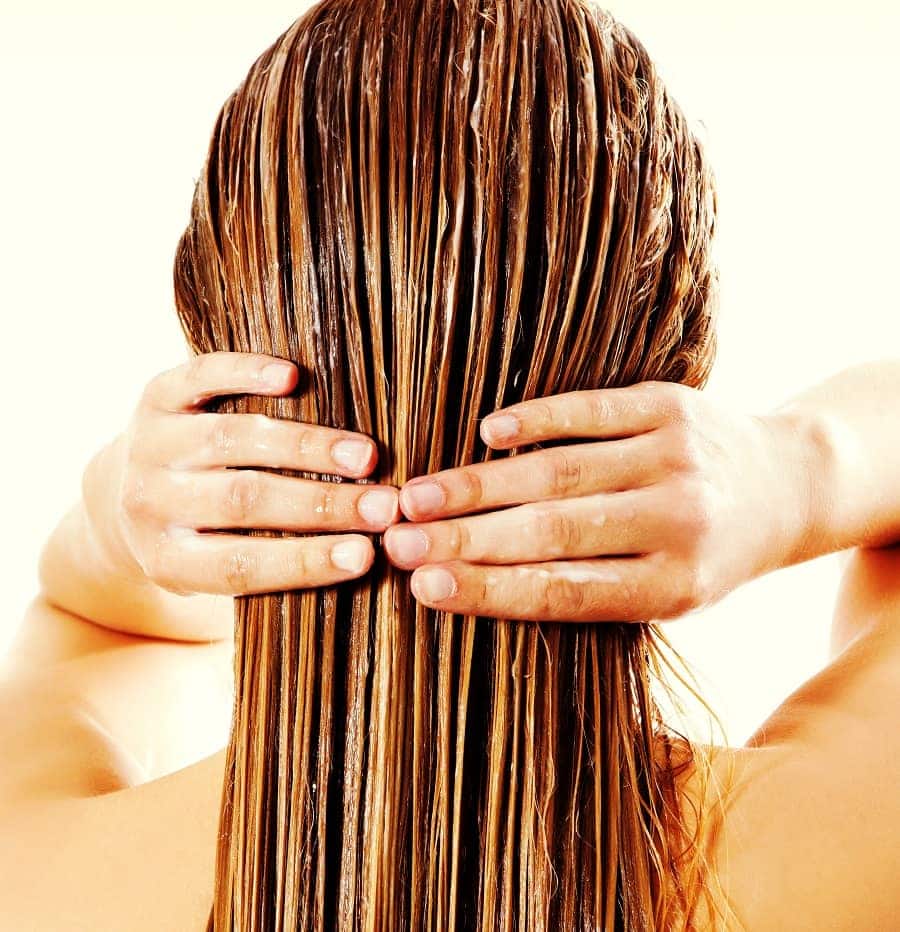
If your hair is chemically processed or color-treated, it requires even more hydration than hair that is not color-treated, or as we say in the industry, “virgin hair”.
Your colored hair needs an extra dose of moisture, even if you use a moisturizing, sulfate-free shampoo. As a rule, you should condition your hair every time it is shampooed.
Conditioning your color-treated hair involves more than slapping some conditioner on and immediately rinsing it out. You should comb the conditioner through your hair, and let it sit for at least 5 minutes before rinsing it out. This gives your hair the chance to soak in some of that moisture.
Also, remember how I said to shampoo your hair with warm water instead of hot water? Well, you should be rinsing out your conditioner with cool water.
Cold or cool water seals the cuticle of your hair, which helps your hair to retain the moisture from the conditioner, along with your precious hair color.
Rinsing your conditioner out with cool water will also minimize frizz and leave your hair with a smooth, shiny finish.
2. Regular Hair Treatments
Because color-treated hair has been chemically altered, it needs a bit of extra care. Hair treatments are an essential part of any color-treated hair routine.
There are two main types of hair color treatments: protein treatments and moisture treatments. Below, you will find useful information about each of these hair treatments.
Protein Treatments
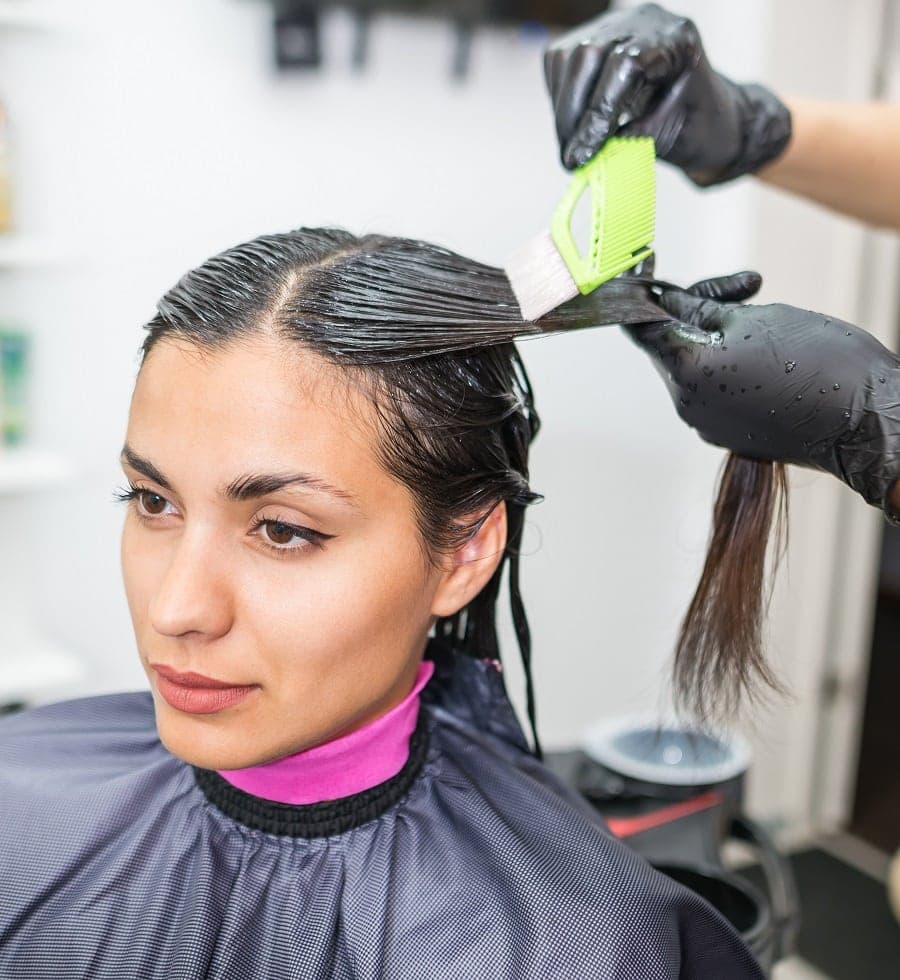
Applying protein treatments to your color-treated hair is vital for maintaining its strength. When your hair is colored by permanent hair color, its core is chemically altered, which can make your hair weak and prone to breakage. That is why protein treatments are so essential to color-treated hair.
What Do Protein Treatments Contain?
Different protein treatments contain various types of protein. You may have seen the terms “silk protein” or “rice protein” on various hair products.
However, there is a general consensus among the professional hair industry that keratin is the most beneficial and effective type of protein for hair.
Keratin is the protein that already naturally occurs in our hair, so our hair absorbs it easily, and it is very strengthening.
What Does Protein Treatment Do to Color-treated Hair?
A hair protein treatment, such as a keratin treatment, can help repair the damaged bonds of your hair. Initially, you may not see an immediate difference in your hair.
However, as you consistently incorporate a keratin treatment into your hair care routine, you may start noticing a reduction in hair breakage and an improvement in strength and definition.
How Often Should I Use A Protein Treatment on My Color-treated Hair?
Everyone’s hair is different, so the frequency of your hair protein treatments will depend upon your own unique hair needs. However, in general, protein treatments should not be applied more than once a week.
They can be somewhat drying to the hair, so I usually recommend that my clients alternate a protein treatment with a moisture treatment every other week.
If you are noticing that your hair is starting to feel dry, brittle, and a bit too tough, take a break from your protein treatment for a week or two and balance your hair with some moisture.
Moisture Treatments
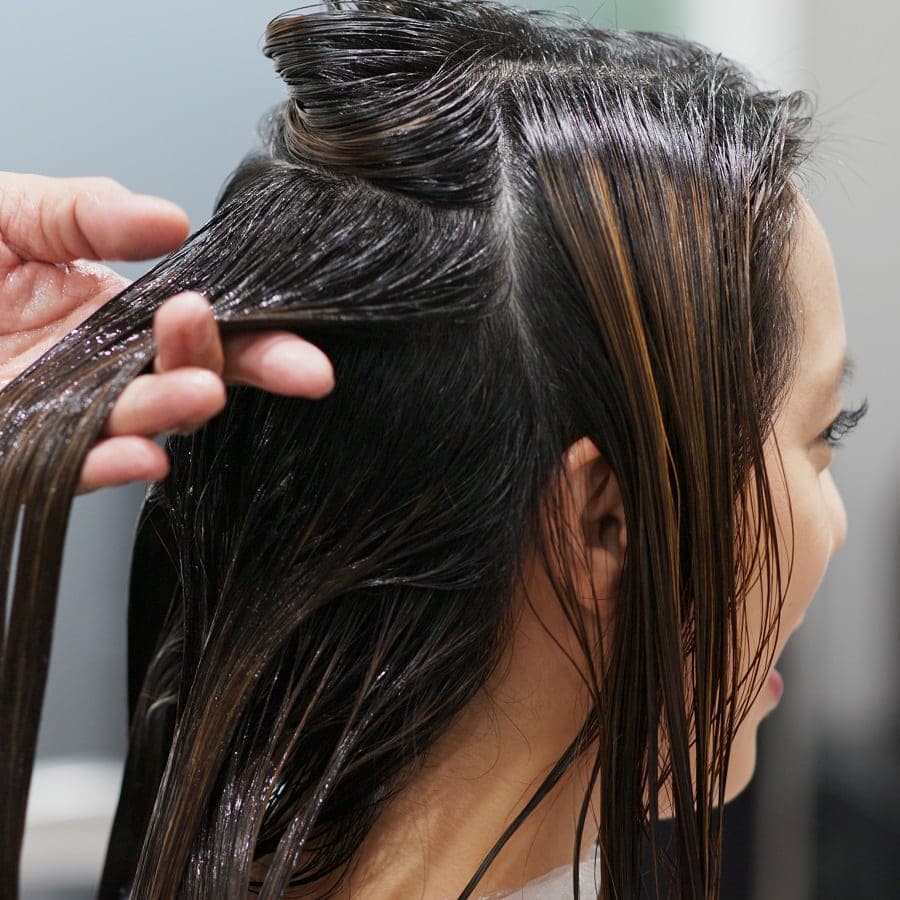
Color-treated hair needs an extra dose of hydration. The damage that is caused by coloring your hair can make it extra dry and frizzy.
Regular conditioner alone is not enough for chemically altered or color-treated hair, so adding a moisture treatment to your hair care routine will provide the extra hydration that your hair needs.
What Do Moisture Treatments Contain?
Moisture treatments contain humectants, oils, and other nourishing substances that seal moisture into the hair. Each moisture treatment is different, so you may have to experiment with some different products to see which one works best for you.
If your hair is thick, coarse, and very dry, you need to use a richer moisture treatment that is designed for thick, extremely dry hair.
If your hair is fine, thin, or easily weighed down, use a moisture treatment that is a bit on the lighter side. This would mean avoiding treatments that have heavy oils in them or those that are designed for thick, coarse hair.
What Does Moisture Treatment Do to Color-treated Hair?
Including a moisture treatment in your color-treated hair care routine will affect your hair significantly. This is especially true if you live in a dry climate. You may notice results right away.
Your hair will look shinier, feel softer, and even appear more vibrant and less dull. After you have incorporated moisture treatments into your routine, you may also notice that your hair is less frizzy.
How Often Should I Use a Moisture Treatment on My Color-treated Hair?
Moisture treatments can be used once a week, or even twice a week on very dry hair. However, just as is the case with protein treatments, you may need to experiment with the frequency at which you apply moisture treatments as everyone’s hair responds to them differently.
If you notice that your hair feels weighed down, greasy, or stringy, it is time to take a break from your moisture treatment for a week or two. Try balancing your hair with a protein treatment.
3. Protect It from Damage
If you have color-treated hair, your hair has been damaged, even to a small extent. Therefore, in order to maintain the health and appearance of your hair, you should try to avoid damaging it further.
Damage to your hair can come from environmental factors or what you do to your hair. Let’s consider how you can protect your color-treated hair from damage and thereby ensure that your hair stays strong, healthy, and vibrant.
Protect Your Color-Treated Hair from the Sun
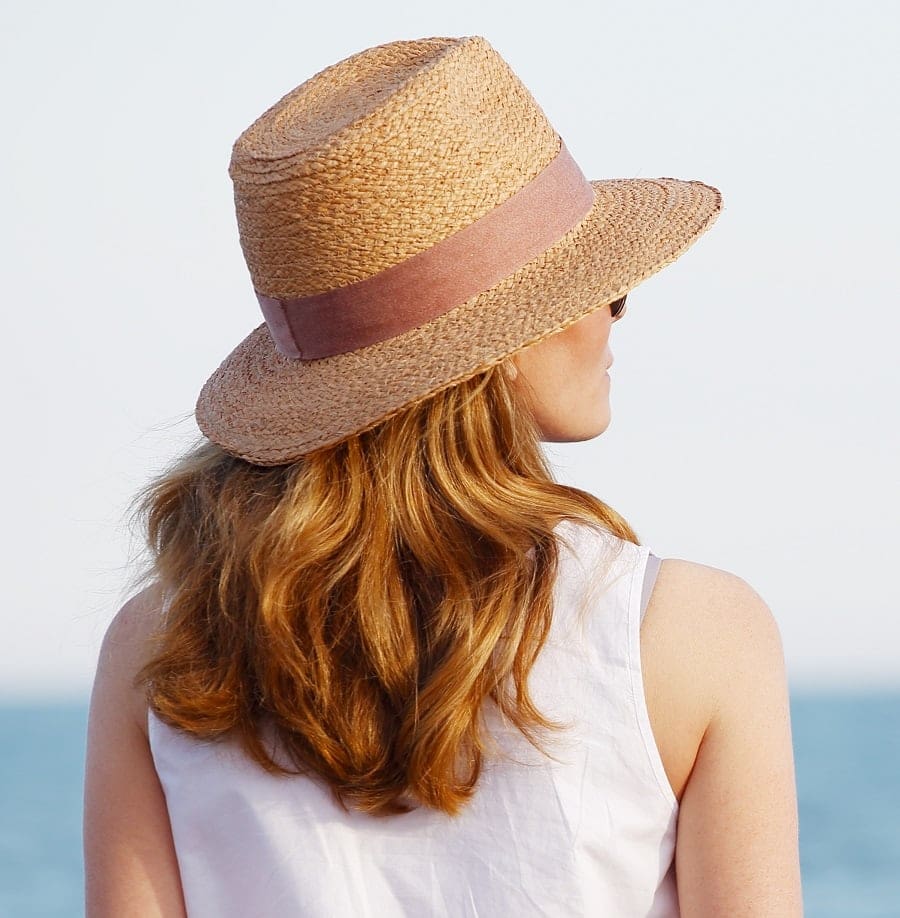
It is no secret that the powerful UV rays from the sun can have a bleaching effect on hair. That’s why you can create highlights in your hair by spraying lemon juice on it and basking in the sun for a few hours! But, if you are trying to maintain your beautiful hair color, the sun can be your worst enemy. Prolonged exposure to sunlight can cause your hair color to fade and even lighten.
How to Protect Hair from The Sun?
Just like you protect your skin from the sun, you can protect your hair as well. The best way to protect your color-treated hair from powerful, color-fading UV rays is by wearing a wide-brimmed hat. Wide-brimmed hats are functional, practical, and stylish. Why not add a few to your wardrobe?
If you don’t want hat hair, there is another option for protecting your hair from the sun. Nowadays, many hair and skincare brands are selling hair and scalp SPF.
These spray-on sunscreens protect your scalp from damaging UV rays and also extend the life of your hair color by serving as a protective barrier between your hair and the sun.
Protect Your Color-Treated Hair from Chlorine and Hard Water

Chlorine and hard water can damage anyone’s hair, but especially those with color-treated hair. Chlorine is a strong disinfectant used in pools and public water, and it is extremely drying to skin and hair.
Hard water contains minerals that can build up on the hair and make it difficult for moisture to reach the hair.
How to Protect Hair from Chlorine And Hard Water?
If you love swimming in the pool during the summertime, you must take certain measures to protect your color-treated hair from that highly-chlorinated water.
The best way to protect your hair from pool water is by wearing a swim cap. If a swim cap is not available, soak your hair with regular tap water before entering the pool. Because your hair is already saturated with water, it will not soak up as much of the pool water.
If you live in an area with hard water, you can soften the water that you use to wash your hair by putting a hard water filter on your shower head. They are available to purchase online, and are surprisingly inexpensive, yet effective.
Protect Your Color-Treated Hair from Heat Damage
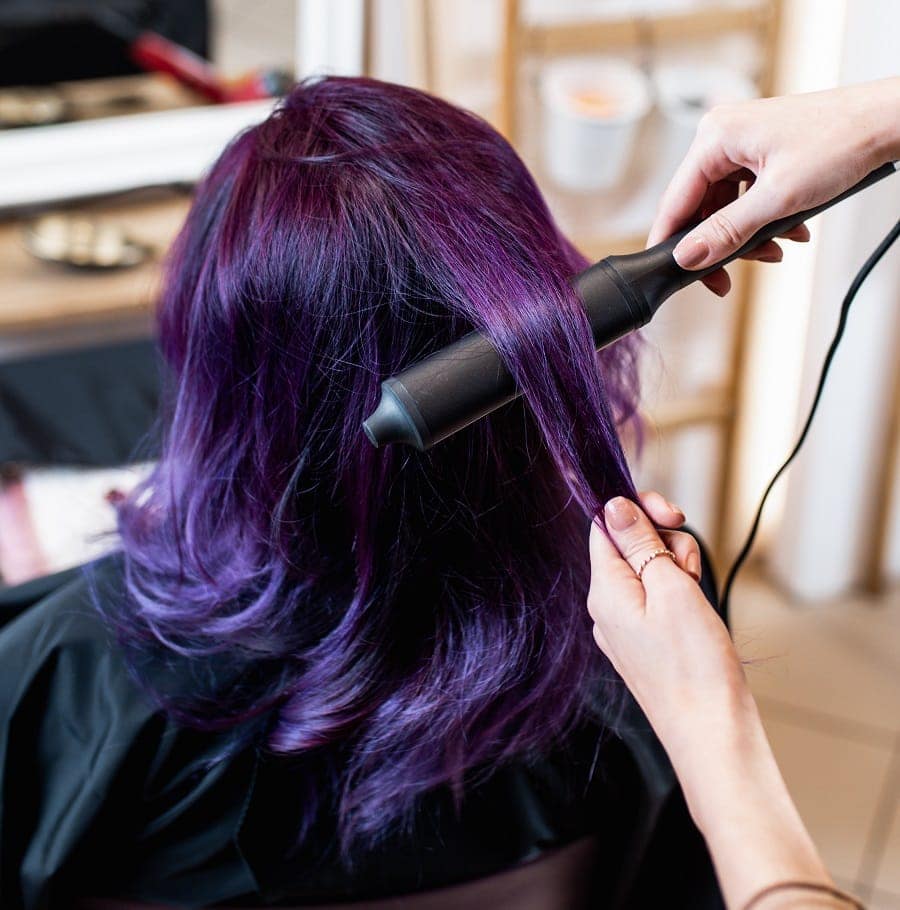
Heat damage is very common. If you frequently style your hair using heat, chances are that your hair has heat damage. For color-treated hair, heat damage can actually cause the color to fade.
That means that along with the typical symptoms of heat damage, such as breakage, dryness, and brittle texture, the life of your color will also be dramatically shortened. It’s clear that heat damage should absolutely be avoided.
How to Protect Hair from Heat Damage?
There are three ways you can protect your hair from heat damage.
- Minimize the frequency of your heat styling. Do not style your hair with heat every day, and if possible, go for several days without applying any heat to your hair.
- Decrease the amount of heat you are putting on your hair. Do not use the highest heat setting on your blow dryer, flatiron, curling iron, or other styling tool.
- Use a good heat protectant. Never apply heat to your hair without first applying a heat protectant that will create a barrier between your hair and the heated styling tool.
4. Refresh Your Color
A great way to maintain your vibrant color before dyeing it for a touch-up is by refreshing your hair color at home.
Can You Use Old Hair Dye and Achieve Desired Results?
If you refresh your color between color service appointments, you may not feel the need to get your hair colored as often, which can minimize the damage to your hair.
Furthermore, there are several different products and methods that can be used to refresh your hair color, so you can choose exactly which option will work best for you.
Refresh Your Hair Color With A Color-Depositing Shampoo
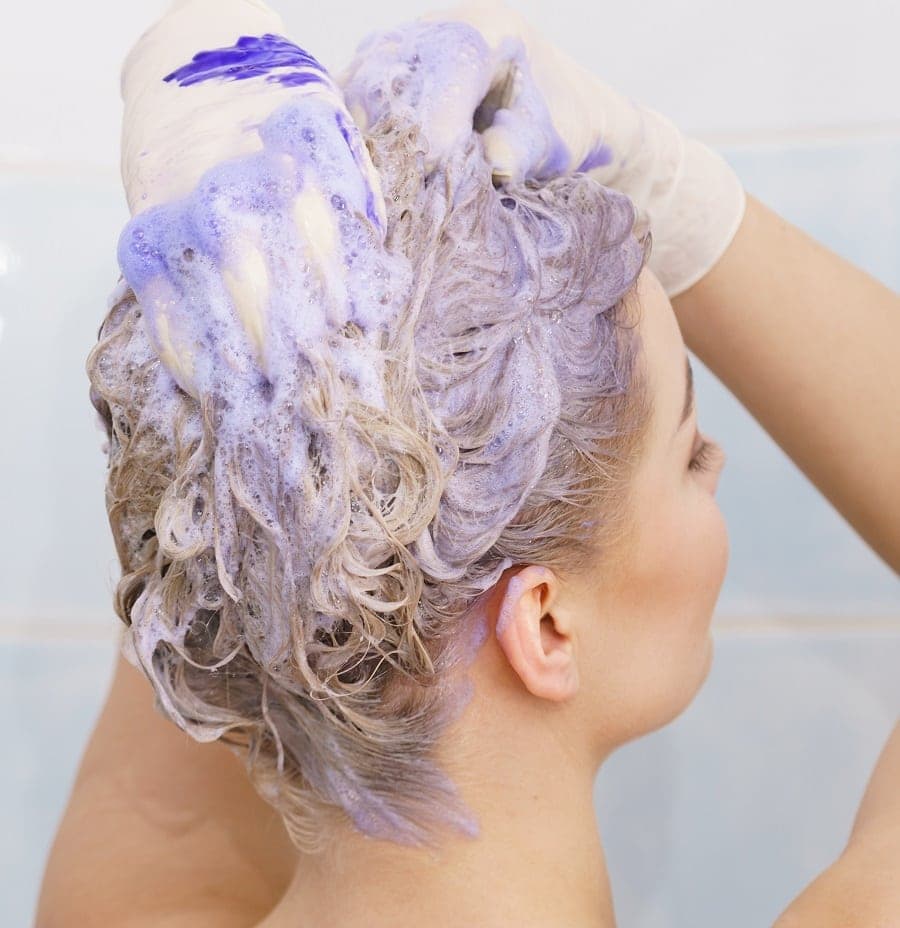
If you have blonde or silver hair, you have no doubt heard of purple shampoo, a shampoo that contains a purple-blue pigment designed to minimize brassy tones in the hair.
But, did you know that there are many other pigmented shampoos? Color-depositing shampoos come in all shades, and they are very useful for adding a bit of intensity and pigment to dull, color-treated hair.
How to Use A Color-depositing Shampoo?
Color-depositing shampoos can be used as often as once a week. Usually, the directions on the bottle will tell you how many times you should apply the shampoo each time you use it, and for what amount of time you should leave it on your hair.
It is best to rinse out the shampoo with cool water in order to seal some of the color into the hair. Also, don’t forget to condition your hair afterward.
Refresh Your Hair Color With A Color-Depositing Conditioner
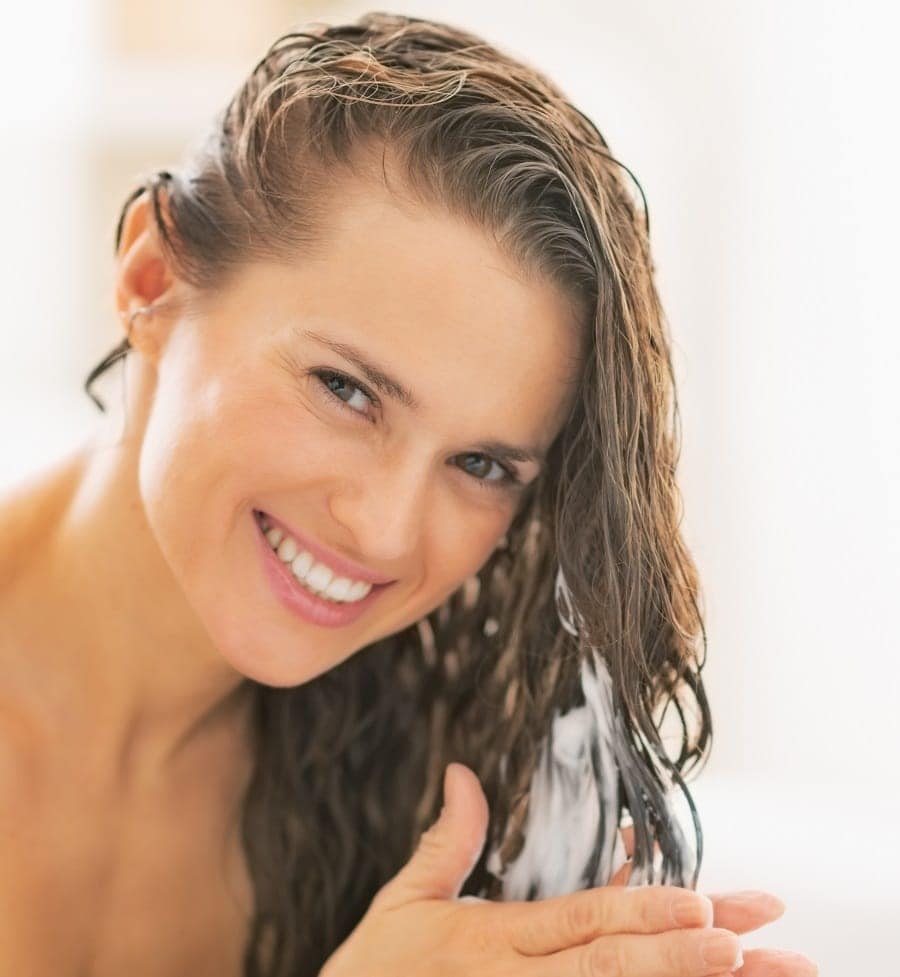
Color-depositing conditioners are a great thing to add to your color-treated hair care routine because they not only refresh your color, but hydrate your hair as well. Just like color-depositing shampoos, color-depositing conditioners come in many shades, from natural tones to fashion colors. No matter what color you choose, be assured that a color-depositing conditioner will provide your hair with much-needed hydration, while also refreshing your color.
How to Use A Color-depositing Conditioner?
Color-depositing conditioners can be used as often as you wash your hair. They are applied to freshly shampooed hair, and can usually be left on for as long as you prefer.
The directions will tell you the minimum amount of time that is required for the conditioner to have an effect, but leaving it on for longer won’t hurt your hair. It will moisturize it even more!
Keep in mind that it is best to rinse out the conditioner with cool water in order to seal the moisture and color into your hair.
Summary
Color-treated hair requires a bit of extra maintenance, but once you have developed good hair care habits, it should be a piece of cake! Whether you are considering coloring your hair for the first time, or you have been coloring your hair for years, the suggestions in this article will completely equip you to maintain the health and vibrance of your color-treated hair.
Key Things to Know:
- Wash your color-treated hair with a color-safe, sulfate-free shampoo, and condition it every time you wash it.
- Use moisture and protein treatments regularly in order to build and maintain the strength and hydration of your color-treated hair.
- Protect your color-treated hair from color-fading UV rays by wearing a wide-brimmed hat or using hair sunscreen.
- Protect your color-treated hair from damage caused by chlorine, hard water, and heat.
- Refresh your color by using a color-depositing shampoo and/or conditioner.


